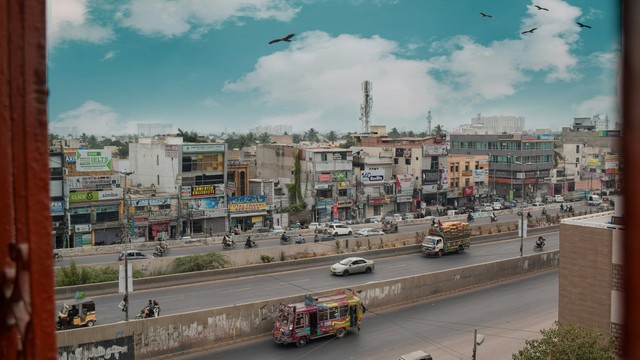It's the thought that counts: how can Addis deliver for the world’s poorest?
This month the world's leaders will meet in Addis to decide how they fund the Sustainable Development Goals. While the focus will be on where this money will come from, the real question is will this money support the world's poorest to shape their own futures?

The upcoming United Nations Financing for Development Conference in Addis Ababa has fuelled debate about how the post-2015 development agenda will be financed. But it is not just a case of where the money will come from but how it will be used.
It is clear that the Sustainable Development Goals (SDGs) will only be realised if sufficient, accessible, and accountable aid is available to address the needs of the poorest communities. This week IIED launches the 'Architecture of aid', a new interactive webpage that explores the limitations of traditional top down aid flows, and presents an alternative model, driven by federations of the urban poor.
IIED is also starting work on a major new change initiative looking at how to deliver finance where it is needed most to achieve global goals on poverty eradication, equity and environmental sustainability.
Development aid struggles to reach the poorest
Most development finance is highly centralised, it flows between donor and recipient governments. In country, development programmes are shaped by international development agencies and national governments. Projects and programmes are rarely influenced by the needs of municipalities or city governments, and less still, by the needs of the poorest communities.
If the SDGs are to stand any chance of 'getting to zero' (PDF) and 'leaving no-one behind', we need an alternative approach that allows low-income communities to directly access and influence funds – shaping how development priorities are set and money is spent.
Benefiting the poor
In the absence of access to development aid, organised urban poor groups, such as Shack/Slum Dwellers' International and the Asian Coalition for Housing Rights, have developed alternative ways of providing funding based around community savings schemes that pool resources at the community, city and district level.
Over time, some development agencies have recognised the potential in these networks and have provided grants that have been added to savings to form local funds for community-led upgrading, including the development of housing and basic services.
The 'Architecture of aid' page outlines the practical outputs from this approach and shows how communities have been empowered to engage with the state, securing access to housing and services, but also political recognition.
Another advantage to decentralising development aid is that it addresses some of the key challenges that undermine the effectiveness of traditional development finance:
- Local funds are locally managed and owned. Local people are empowered to take ownership by taking part in planning processes and when investments come from their own community savings groups. Local management enables local groups to identify low-cost ways of making investments, which means project costs can fall substantially
- Decentralised funds suit local timetables. Development aid can bolster existing local funds that provide small sums of flexible, fast cash, and local groups can use this money to develop projects and programmes that address collective needs according to their own timetables
- Small funds build bridges between communities and local government. Communities can use decentralised funds to nurture partnerships with local government. Such collaboration can result in more democratic planning processes and leverage state funding and other resources to extend local development initiatives, and
- Networked communities can spend shared finance efficiently. Individual communities often form networks at the city level to manage their collective finance more effectively. As development finance is decentralised, networked community groups can share the benefits and be more effective. Decentralisation also increases the accountability of local and district governments.
Other work by IIED, for example on decentralising climate finance in Kenya, Mali and Senegal, further strengthens the case for decentralising development finance.
The challenge for Addis is to ensure that the global community not only finds the means of funding the Sustainable Development Goals, but that the money gets to the poorest and allows them to be agents of change as opposed to merely recipients of aid.
Anna Walnycki (anna.walnycki@iied.org) is a researcher in IIED's Human Settlements Group.




